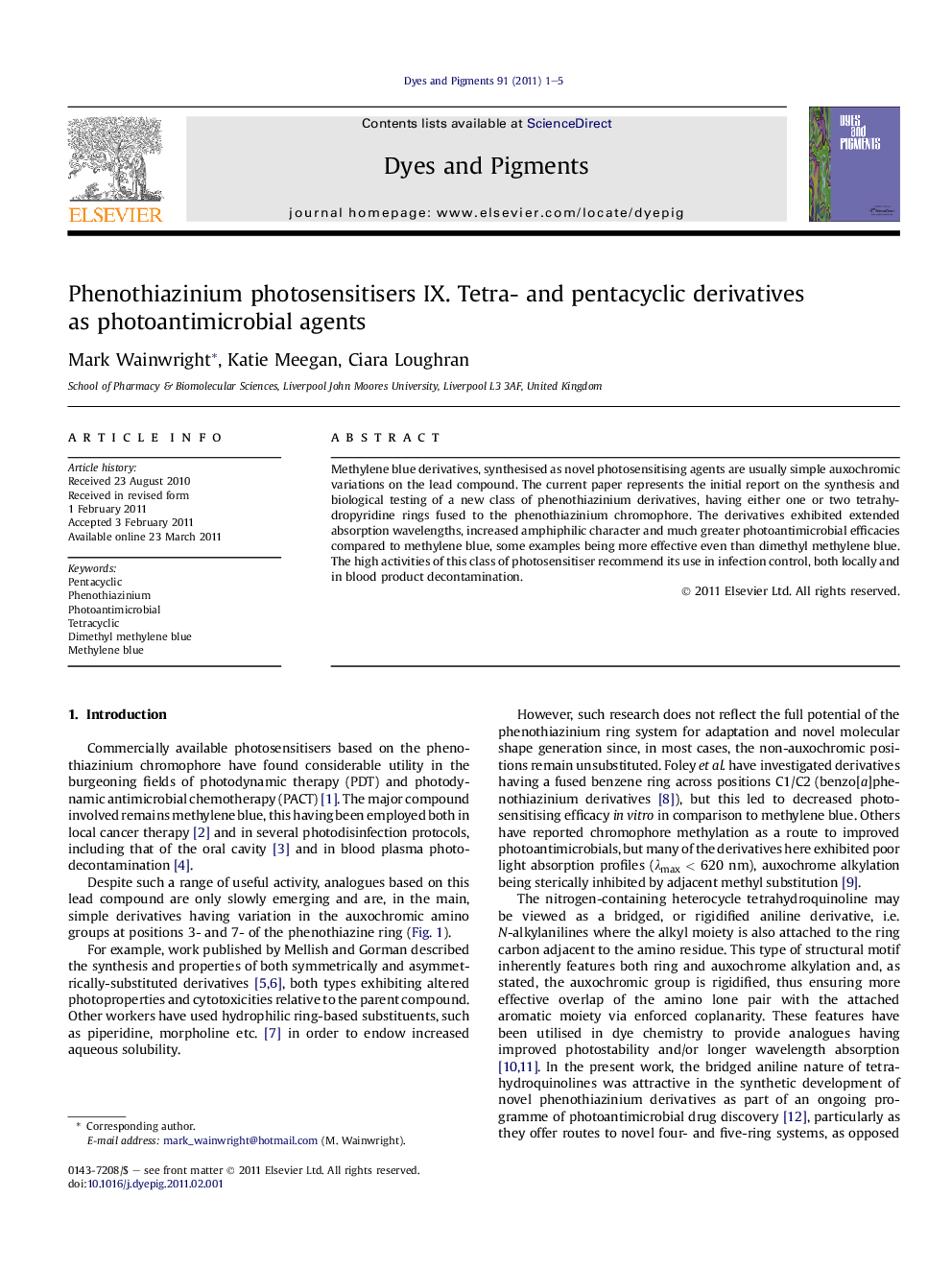| Article ID | Journal | Published Year | Pages | File Type |
|---|---|---|---|---|
| 177193 | Dyes and Pigments | 2011 | 5 Pages |
Methylene blue derivatives, synthesised as novel photosensitising agents are usually simple auxochromic variations on the lead compound. The current paper represents the initial report on the synthesis and biological testing of a new class of phenothiazinium derivatives, having either one or two tetrahydropyridine rings fused to the phenothiazinium chromophore. The derivatives exhibited extended absorption wavelengths, increased amphiphilic character and much greater photoantimicrobial efficacies compared to methylene blue, some examples being more effective even than dimethyl methylene blue. The high activities of this class of photosensitiser recommend its use in infection control, both locally and in blood product decontamination.
Graphical abstractFigure optionsDownload full-size imageDownload as PowerPoint slideHighlights► Tricyclic methylene blue-type structure extended to four or five rings. ► Linear and angular derivatives. ► Increased maximum wavelength of absorption to ca. 690 nm. ► Much improved photoactivity against Gram +/− bacteria and fungi.
